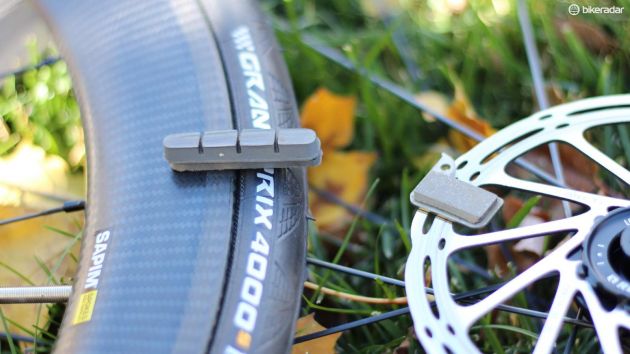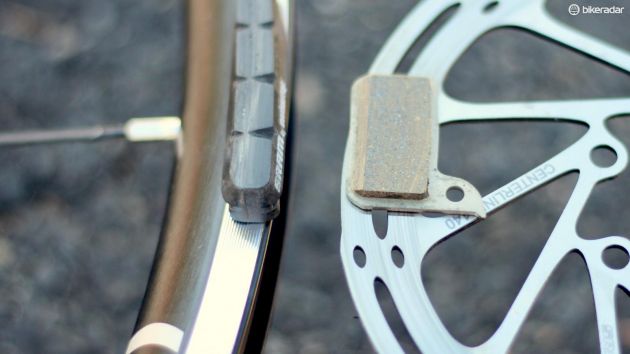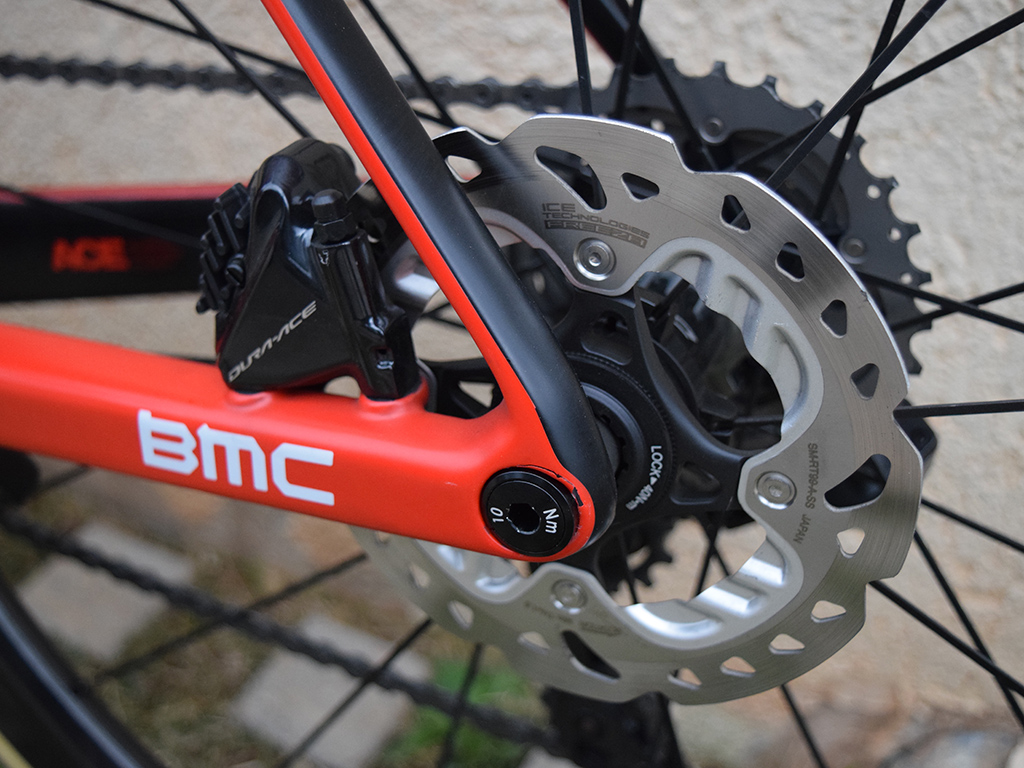Full stop: road disc brakes take over in 2018
The tipping point is now, bike and component brands say





This article originally appeared on BikeRadar
Fausto Pinarello: We don't think a high-performance bike needs disc brakes
Wholesale use of disc brakes in pro peloton is inevitable, says Pozzato
Trek-Segafredo: We're not going to push Degenkolb or Contador onto disc brakes
Another first: Kittel wins Tour de France stage on disc brakes
FSA adds hydraulic disc brakes to W.E groupsets for 2018
To hear SRAM and Shimano tell it, more road disc brakes will sell this year than rim brakes in sales of groups and complete bikes. Bike brands such as Specialized, Trek and Cannondale back this up.
While most brands will continue to support both styles of brakes, Specialized is clearly pointed towards disc-only.
"We are going to stop selling full rim-brake road bikes, and will only sell them as framesets," says Specialized PR spokesman Sean Estes.
"2018 will be the tipping point for sure"
Shimano does not publicly share sales numbers, but road product manager Dave Lawrence says disc brakes are certainly overtaking rim brakes this year.
"It is across the board, not just high- or low-end bikes or groups," Lawrence says. "It really ramped up in the second half of 2017, both OE [meaning original equipment sold to bike brands] and aftermarket. We have not been able to meet demand for Dura-Ace and Ultegra hydraulics. There is a good chance we will see disc eclipse rim brake in total sales in 2018."
SRAM doesn't share specific figures either, but spokesman Michael Zellmann did give percentages for the component company's sales.
Get The Leadout Newsletter
The latest race content, interviews, features, reviews and expert buying guides, direct to your inbox!
For model year 2018 product, discs represented 67 percent of all sales, Zellmann says, compared to 44 percent for model year 2017. (Model years are often a year ahead of the actual calendar. For example, SRAM sold MY2018 brakes during 2017.)
Of those MY2018 sales, discs represented a whopping 87 percent of road brakes sold as OE to bike brands, according to SRAM. For aftermarket sales, discs represented 13 percent of road bike sales.

Some brands such as Specialized and Giant are more bullish on discs, dropping rim-brake bikes entirely from certain road categories
Relatedly, SRAM's Zipp division reported that 25 percent of its MY2018 road wheels were disc models, compared to 20 percent the prior year.
Certain parts of the world and certain companies have been faster to adopt discs than others.
"In hillier areas they have noticed more disc sales," Zellmann says. "And Specialized was one of the first to adopt, so their [disc] sales are higher than some others. Europe has been slower to adopt. That was true with carbon wheels, and even disc brakes on cyclocross bikes."
So, are rim brakes dead?
So will rim brakes always be part of the road equation, or are they on the way to being completely eliminated from the modern road bike? The answer to that depends on whom you ask.
Specialized is clearly moving towards disc-only. The Roubaix endurance bike is already a disc-only machine. At all but the low-end model, the Venge aero bike only comes in disc. You can buy the Venge rim machine as a frameset, but not a complete bike.
Giant has already committed completely to disc for a few types of 700c bikes. Disc cyclocross bikes aren't surprising, but the company's Propel SL aero bike is also disc-only.

Cannondale has 32 disc road bikes and 22 rim-brake models for 2018
Cannondale is pushing hard for a change in braking, with 32 of its current road models coming with discs compared to 20 rim-brake bikes.
"It's foreseeable that the majority of remaining unconvinced road riders will adopt disc brakes over the next couple of years," says Cannondale product manager Nina Baum.
"Road riders tend to be technically savvy, and with the performance advantage of disc brakes further corroborated by their ascent to WorldTour podiums we will see even those denizens of the sunnier and more well-paved parts of the country and world, who have clung with wearied forearms to their lightweight rim-brake setups, start to move their next purchase plans to disc-brake-equipped."
Giant, one of the industry's biggest players and a manufacturer of many other brand's bikes, has seen a steady progression towards disc in its own road sales. Globally, Giant has moved from 72 percent rim brake in model year 2016 to 70 percent in 2017, 62 percent in 2018 and 60 percent in model year 2019.
Giant global product marketing manager Andrew Juskaitis says the percentages have tracked similar for bikes above and below $2,000. For some companies, higher-end bikes have been quicker to move to discs.
Although 2018 sees Giant with 25 disc- and 33 rim-brake road bikes, the company expects to be at 40 percent rim / 60 percent disc for model year 2020.

Of its road groups sold to bike brands in 2017, SRAM claimed 67 percent were disc models
Meanwhile, Trek and Shimano let riders choose
Trek road director Jordan Roessingh insists that the Wisconsin company isn't taking sides on road brakes.
"Our World Tour team, Trek-Segafredo, were given the option of which braking solution to use for the 2018 racing season, and they chose disc," Roessingh says. "Their selection was based on extensive ride testing, and their perception that discs provided a performance advantage for them."
Roessingh says Trek offers more options than any other brand in rim and disc. "And for the foreseeable future, the amount of options available to consumers within our line will only increase further.
"Offering both braking solutions is not great for us, as it makes our business significantly more complicated. Despite that, we believe that it's best to look at it through the consumer's eyes, and right now, consumers want choice."
Shimano is taking a similar position.
"Rim brakes aren't going away anytime soon," Lawrence says. "People are still looking for the absolute lightest bike. We have never tried to push one way or the other. We build both."